Hand-Held Traffic Control Signs
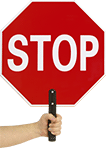
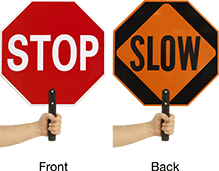
Guide pedestrians and vehicle traffic. These signs have a message on both sides. They are reflective for increased visibility in low-light conditions.
High-Visibility Freestanding Retractable Belt Barriers
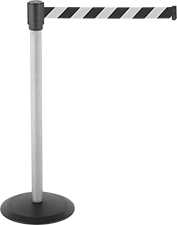
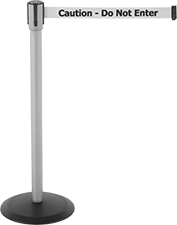
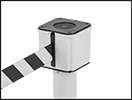
To make a complete unit, team one or more belt barriers with a wall receptacle or receiver post.
Belt | Post | Housing | Base | |||||||||||||||
|---|---|---|---|---|---|---|---|---|---|---|---|---|---|---|---|---|---|---|
| Lg., ft. | Wd. | Color | Material | Message Color | Ht. | Color | Material | Dia. | Color | Material | Material | Type | Cover Material | Dia. | Weight, lbs. | No. of Connection Points | Each | |
Striped Belt | ||||||||||||||||||
| 30 | 2" | Black/Yellow | Polyester | __ | 40" | Yellow | Aluminum | 2 1/2" | Yellow | Polycarbonate | Iron | Solid | ABS | 14" | 30 | 1 | 000000000 | 0000000 |
Message Belt: Caution—Do Not Enter | ||||||||||||||||||
| 30 | 2" | Yellow | Polyester | Black | 40" | Yellow | Aluminum | 2 1/2" | Yellow | Polycarbonate | Iron | Solid | ABS | 14" | 30 | 1 | 000000000 | 000000 |
Receiver Posts for Freestanding Retractable Belt Barriers

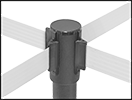
Provide an end point for a belt barrier.
These posts are connection points only and have no belt.
Portable-mount posts have a wheeled base, so they’re quick and easy to move around. You can nest three or four posts to move them at the same time.
Build-Your-Own Chain Barriers
Mix and match posts and chain to create a barrier that suits your needs.
All posts have a removable top. Fill the base with sand or pea gravel for added stability. Styles A and C have a hook connector at the top of the post to attach chain on either side.
Warning: Chain is not load rated. Do not use for overhead lifting, towing, or similar applications.


Post | |||||||||
|---|---|---|---|---|---|---|---|---|---|
| Style | Shape | Ht. | Dia. | Base Dia. | Material | Environment | Choose a Color | Each | |
Solid | |||||||||
| A | Round | 33" | 2" | 14" | Polyethylene | Outdoor | 0000000 | 000000 | |
| A | Round | 41" | 2" | 14" | Polyethylene | Outdoor | 0000000 | 00000 | |
| A | Round | 41" | 3" | 16" | Polyethylene | Outdoor | 0000000 | 00000 | |
Solid with White Ball Top | |||||||||
| A | Round | 33" | 2" | 14" | Polyethylene | Outdoor | Black | 0000000 | 00000 |
| A | Round | 41" | 2" | 14" | Polyethylene | Outdoor | Black | 0000000 | 00000 |
Striped | |||||||||
| A | Round | 41" | 2" | 14" | Polyethylene | Outdoor | Black/Yellow | 0000000 | 00000 |
| A | Round | 41" | 3" | 16" | Polyethylene | Outdoor | 00000000 | 00000 | |
Chain Barriers
Posts have a removable top. Fill the base with sand or pea gravel for added stability.
Warning: Chain is not load rated. Do not use for overhead lifting, towing, or similar applications.
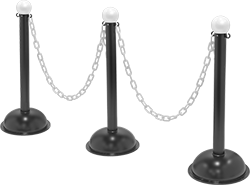
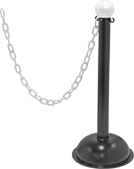
Post | Chain | Inside Link | ||||||||||||
|---|---|---|---|---|---|---|---|---|---|---|---|---|---|---|
| Ht. | Dia. | Color | Base Dia. | Lg., ft. | Trade Size | Color | Lg. | Wd. | Link Dia. | Material | Environment | Includes | Each | |
Barrier | ||||||||||||||
| 41" | 2" | Black | 14" | 8 27/32 | 8 | Yellow | 1 5/16" | 15/32" | 5/16" | Polyethylene | Outdoor | Posts (3), Lengths of Chain (2), Hook Connectors (3) | 0000000 | 0000000 |
| 41" | 3" | Black | 16" | 6 3/4 | 10 | Yellow | 2 1/32" | 13/16" | 7/16" | Polyethylene | Outdoor | Posts (3), Lengths of Chain (2), Hook Connectors (3) | 0000000 | 000000 |
Add-On Barrier | ||||||||||||||
| 41" | 2" | Black | 14" | 8 27/32 | 8 | Yellow | 1 5/16" | 15/32" | 5/16" | Polyethylene | Outdoor | Post (1), Length of Chain (1), Hook Connector (1) | 0000000 | 00000 |
| 41" | 3" | Black | 16" | 6 3/4 | 10 | Yellow | 2 1/32" | 13/16" | 7/16" | Polyethylene | Outdoor | Post (1), Length of Chain (1), Hook Connector (1) | 0000000 | 00000 |
Traffic-Directing Flashlights

Light the way for vehicles; the entire cone illuminates for excellent visibility. Flashlight has color filters that store inside the handle.
Speed Bumps
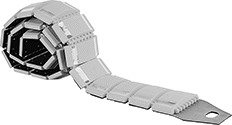
Portable speed bump comes with a canvas carrying bag.
| Material | Lg. | Wd. | Ht. | Color | Features | Each | |
Portable | |||||||
|---|---|---|---|---|---|---|---|
| Plastic/Rubber | 10 ft. | 8 3/4" | 1 3/4" | Yellow | Reflective Accents | 00000000 | 0000000 |



























